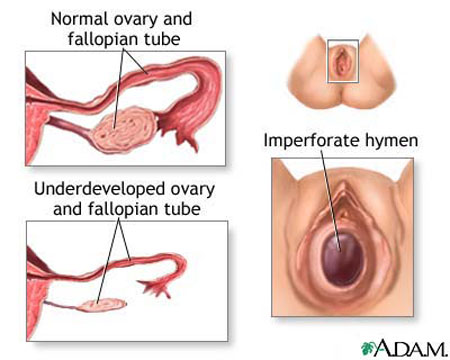Amenorrhea - definition, primary and secondary Amenorrhea

What is Amenorrhea and Definition
Amenorrhea - The absence of menstrual periods. Primary amenorrhea occurs when a young woman does not begin menstruating by age 16; secondary amenorrhea occurs in women who have been menstruating and then stop (miss six or more consecutive periods).
Primary Amenorrhea and Secondary Amenorrhea
Primary amenorrhea may result from GENETIC DISORDERS such as TURNER’S SYNDROME or from hormonal disorders such as pituitary ADENOMA (a tumor of the PITUITARY GLAND) or HYPOTHYROIDISM (underactive THYROID GLAND). PREGNANCY is the most common cause of secondary amenorrhea. Other factors that may cause either primary or secondary amenorrhea include intense physical exercise, excessive body weight (OBESITY), and extreme underweight such as may result from EATING DISORDERS.
Amenorrhea is a symptom of underlying conditions that affect the function of the OVARIES rather than itself a health condition. Because the hormones the ovaries produce affect many other functions within the body, it is important to identify its cause. Unresolved primary amenorrhea may have consequences such as permanent INFERTILITY and failure to develop SECONDARY SEXUAL CHARACTERISTICS.
See also BODY MASS INDEX (BMI); DYSMENORRHEA; EXERCISE AND HEALTH; FERTILITY; HORMONE; OBESITY AND HEALTH; OVULATION; PRIMARY OVARIAN FAILURE; WEIGHT LOSS AND WEIGHT MANAGEMENT.